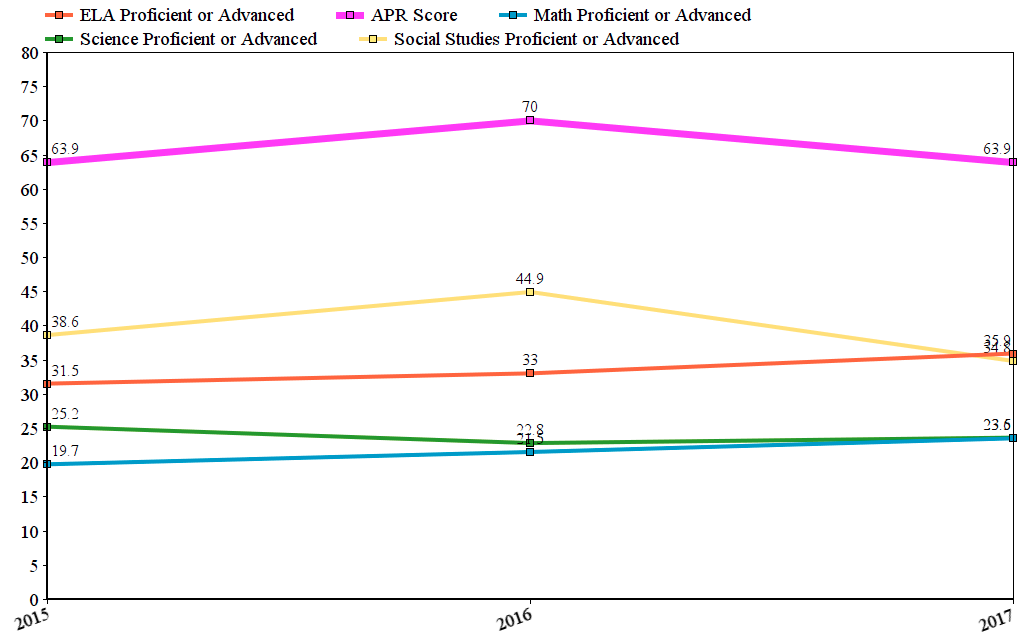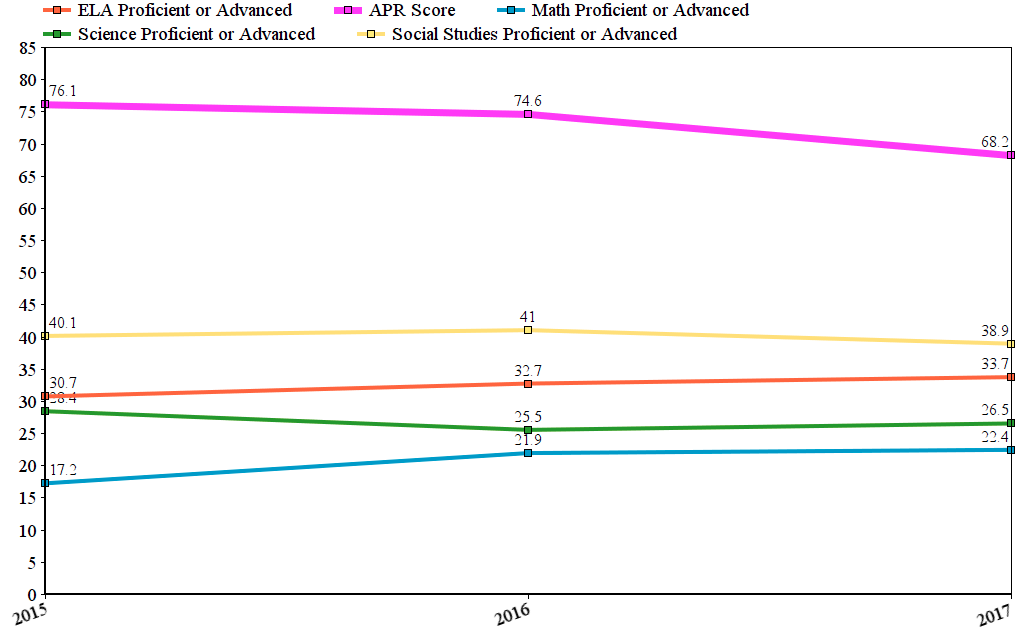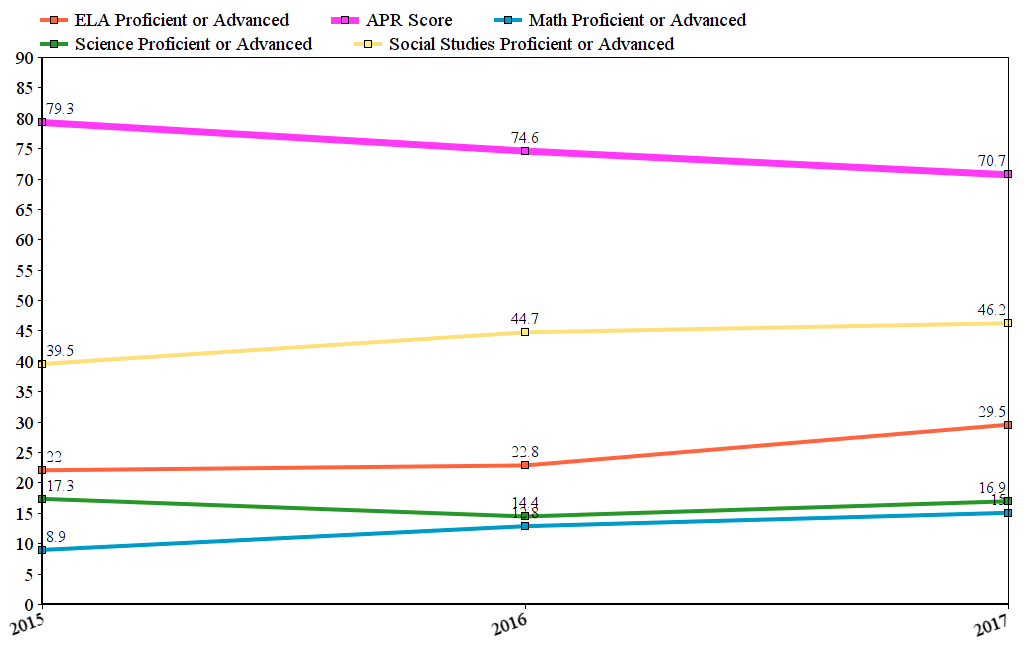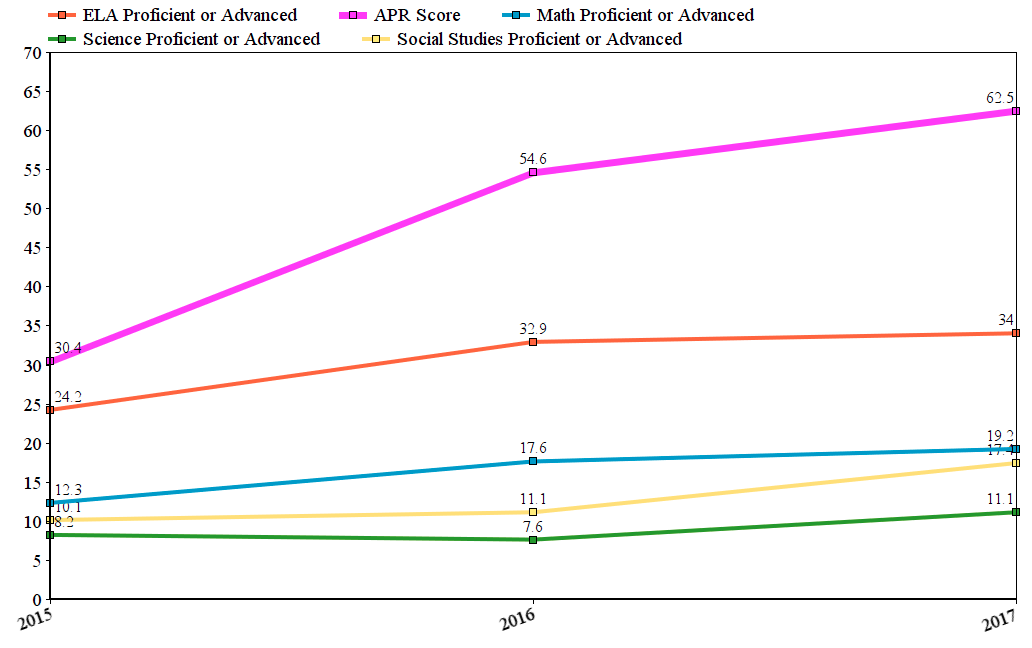Metro districts get mixed APR results
Some of the state’s poorest performing school districts did not fare very well on the 2017 Annual Performance Report issued last week.
Kansas City 33, St. Louis City, and Riverview Gardens all saw significant drops in the state assessment and while the Normandy School Collaborative has been hailed as a bright spot by several media outlets, its APR increase is not supported by strong academic performance (more on this later).
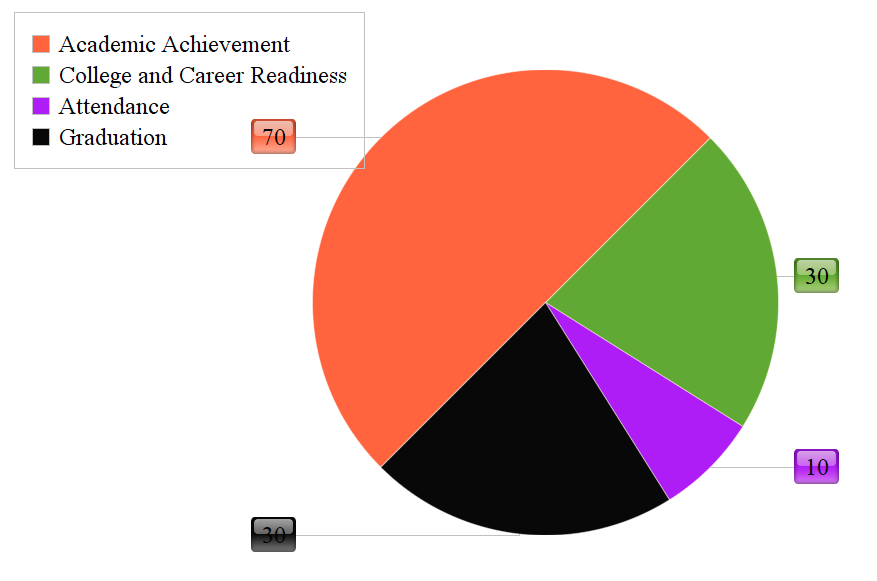 A districts APR score is the result of a variety of factors, including academic achievement, attendance, graduation rates, and college and career readiness. Most schools can score up to a total of 140 points and the state bases district accreditation on the percentage of points scored. The graph above shows how a perfect scoring school would look under this point system.
A districts APR score is the result of a variety of factors, including academic achievement, attendance, graduation rates, and college and career readiness. Most schools can score up to a total of 140 points and the state bases district accreditation on the percentage of points scored. The graph above shows how a perfect scoring school would look under this point system.
Schools scoring 70 to 100 percent (what would amount to “C” to an “A” grade on child’s report card) are considered fully accredited, schools scoring 50 to 69 percent (which would show up as an “F” or a “D” on a report card) are considered to be provisionally accredited, and schools scoring below 50 percent are considered unaccredited.
Kansas City
Kansas City 33 saw a dramatic drop to 63.9 percent of its possible APR points, down from 70 percent in 2016 and back to the exact same level it was at in 2015.
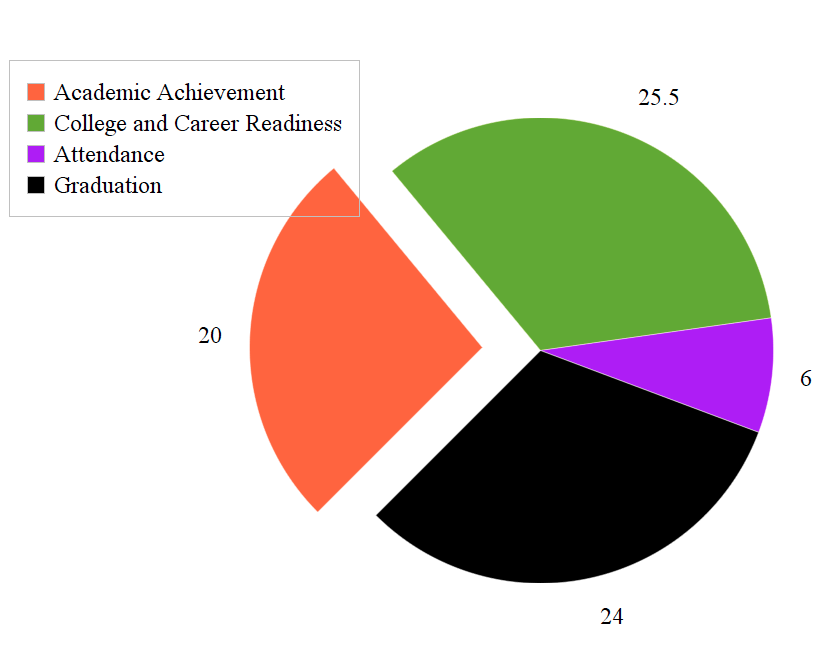 The district scored a total of 89.5 out of a possible 140 points, with only 20 of those points coming from academic achievement. The district loss ground in its math and social studies scores.
The district scored a total of 89.5 out of a possible 140 points, with only 20 of those points coming from academic achievement. The district loss ground in its math and social studies scores.
The other 69.5 points scored by Kansas City 33 were largely a result of graduation (24) and college and career readiness (25.5).
St. Louis Public Schools
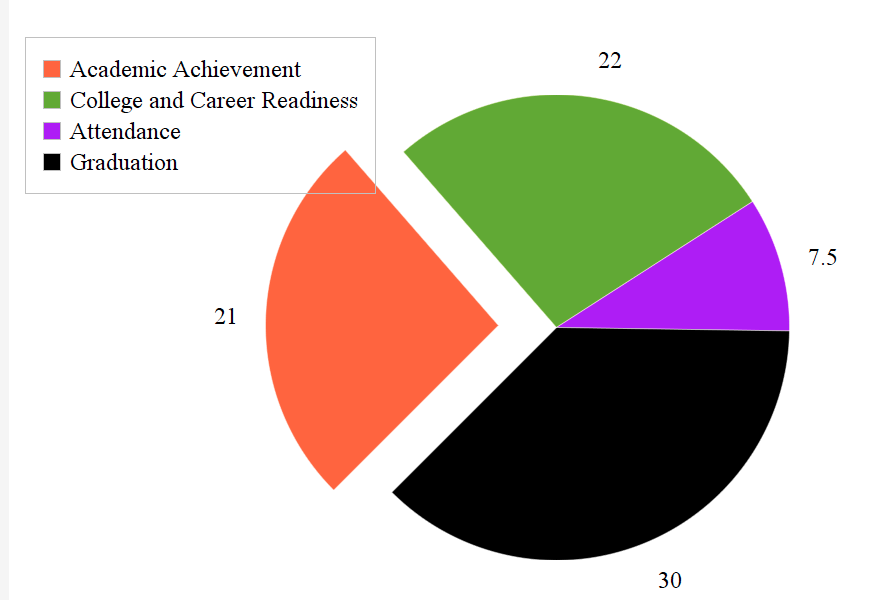 St. Louis Public Schools, which celebrated regaining full accreditation just a year ago, continued to see its APR score decline, dipping below the full accreditation level for the first time in three years to a score of 68.2 percent.
St. Louis Public Schools, which celebrated regaining full accreditation just a year ago, continued to see its APR score decline, dipping below the full accreditation level for the first time in three years to a score of 68.2 percent.
SLPS scored a total of 85.5 points out of a possible 140, with only 21 of those points coming from academic achievement. SLPS scored a perfect 30 points on graduation and pulled in 22 points for college and career readiness as well as 7.5 points for attendance.
Riverview Gardens
Similar to SLPS, the Riverview Gardens district saw continued declines in its APR score after just regaining provisional accreditation last year.
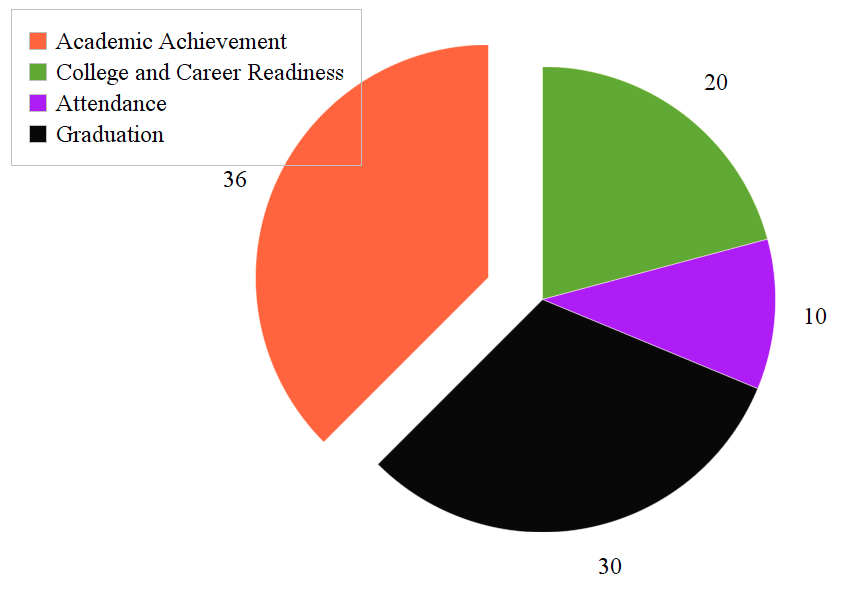 The district just barely managed to stay above the 70 percent threshold with 70.7 percent, scoring a total of 99 out of 140 points.
The district just barely managed to stay above the 70 percent threshold with 70.7 percent, scoring a total of 99 out of 140 points.
Riverview Gardens earned 36 points for academic achievement, 30 points for graduation, 20 points for college and career readiness and 10 points for attendance.
Normandy Schools Collaborative
The Normandy Schools Collaborative was the only district out of the four to see continued growth in its APR, earning 62.5 percent and falling within the provisionally accredited zone for the second year in a row.
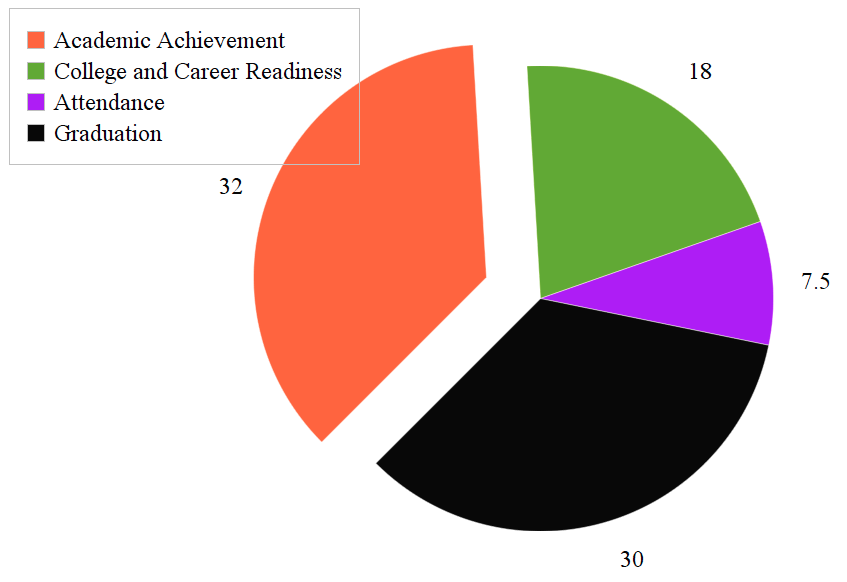 The district scored 32 points for academic achievement, 18 points for college and career readiness, 7.5 points for attendance and 30 points for graduation.
The district scored 32 points for academic achievement, 18 points for college and career readiness, 7.5 points for attendance and 30 points for graduation.
While it is wonderful to see the district making continued improvements, the Normandy School Collaborative is a perfect example of how deceptive an APR score can be when really measuring the effectiveness of a school district.
You would assume that if a school district like Normandy scored 32 out of 70 points for academic achievement then around half of the students were scoring proficiently on state tests.
Sadly, that is not the case.
All of Normandy’s academic achievement points come from the growth category (read last week’s blog for more on how this is calculated). The actual scores coming out of the district are quite depressing when compared to the state averages.
Only 34 percent of Normandy’s students scored proficient or advanced in English (compared to 61.4 statewide), 19.2 percent in math (47.1 statewide), 11.1 in science (53.1 statewide) and 17.4 percent in social studies (65 statewide).
And while the district did make some gains in its academics this year, they were minimal. English scores only increased by 1.1 percentage points and math scores only increased by 3 percentage points. If the district maintains its current growth levels it will take 15 years to get even half of the students performing proficient or advanced in reading and ten years in math.
The low level of these scores is particularly troubling given that the district will soon be applying for reaccreditation — a move which would effectively end the transfer program which is currently enabling students in the district to attend other, higher performing districts in the region.
As one parent of a transfer student recently wrote in a letter to the State Board of Education:
“My children along with hundreds of others will not receive the same level of academic rigor and growth if they were to return to Normandy Schools Collaborative. NSC high school offers a couple of advanced placement classes compared to Kirkwood High School’s offerings of 19 advanced placement classes, which my child is projected to take. The average ACT score at NSC is 14.5 well below the state and national average also below the ACT score my child received when he took it as a 7th-grade student. The average ACT score at KSD is 22.7 above the state and national average of 21.6 and 21.1 respectively.”
“Teachers simply pass the students on lower academic standards in order to have a higher passing rate, therefore allowing students to slip through the school system without acquiring the skills needed to become a contributing member in their community. One such example, a recent 2017 graduate of Normandy Schools Collaborative did not know how to read or understand a simple job application for a fast food restaurant. How can this individual contribute to their community if we are allowing graduates to walk across the stage without basic skills to earn a living wage?”
« Previous Post: 2017 APR SCORES: Data, Data, and more Data
» Next Post: Sunshine in the Show-Me State: 2017 EOC Scores Released
